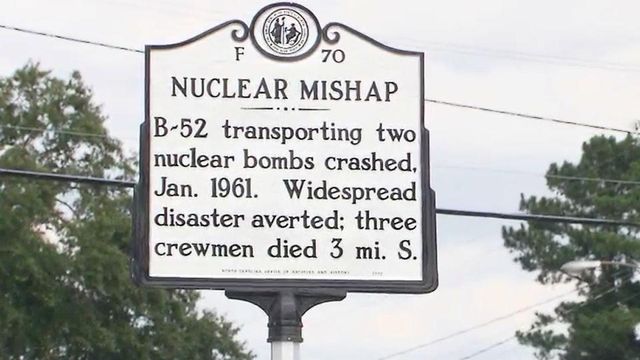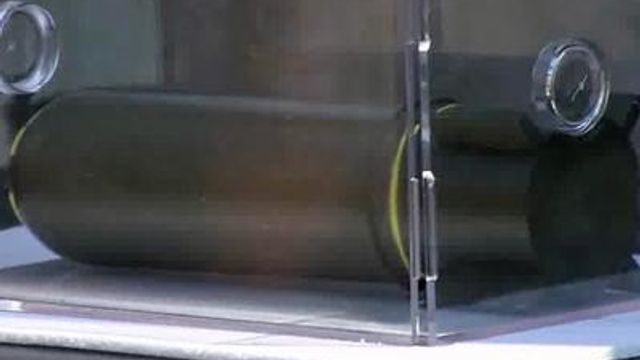Declassified doc details NC's close call with nuclear bomb
A U.S. hydrogen bomb nearly detonated on the nation's east coast, with a single switch averting a blast which would have been 260 times more powerful than the device that flattened Hiroshima, a newly published book says.
Posted — UpdatedIn a recently declassified document, reported in a new book by Eric Schlosser, the supervisor of the nuclear weapons safety department at Sandia national laboratories said that one simple, vulnerable switch prevented nuclear catastrophe.
Two hydrogen bombs were accidentally dropped over Goldsboro on Jan. 24, 1961, after a B-52 bomber broke up in flight. One of the bombs apparently acted as if it was being armed and fired — its parachute opened and trigger mechanisms engaged.
Parker F. Jones at the Sandia National Laboratories analyzed the accident in a document headed "How I learned to mistrust the H-Bomb."
"The MK39 Mod 2 bomb did not possess adequate safety for the airborne-alert role in the B-52," he wrote. When the B-52 disintegrates in the air it is likely to release the bombs in "a near normal fashion," he wrote, calling the safety mechanisms to prevent accidental arming "not complex enough."
The document said the bomb had four safety mechanisms, one of which is not effective in the air. When the aircraft broke up, two others were rendered ineffective.
"What prevented the detonation was one switch, one safety switch, and a fair amount of good luck, because that safety switch was later found, in some cases. to be defective," Schlosser told CBS News.
He discovered the document, written in 1969, through the Freedom of Information Act.
It is featured in his new book on nuclear arms, "Command and Control," which reports that through FOI he discovered that at least 700 "significant" accidents and incidents involving 1,250 nuclear weapons were recorded between 1950 and 1968.
• Credits
Copyright 2024 by WRAL.com and the Associated Press. All rights reserved. This material may not be published, broadcast, rewritten or redistributed.






